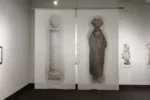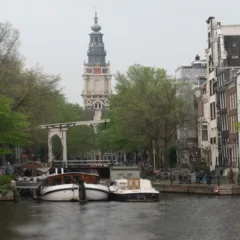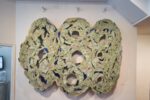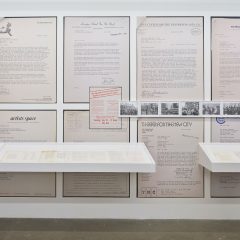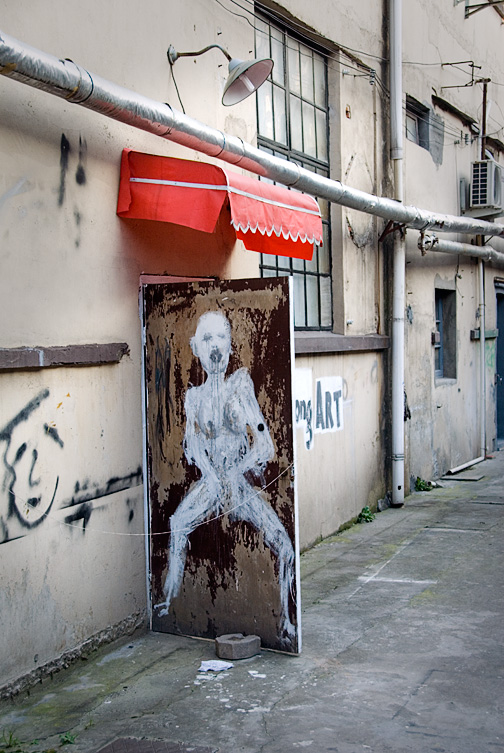
Like much of modern China, the infrastructure of its contemporary art scene has been based on American and European models. Anyone with experience visiting galleries and studios in Long Island City (New York) or River North (Chicago) or Brunnenstrasse (Berlin) can step right into the 798 District of Beijing or the M50 District of Shanghai and get right to business.
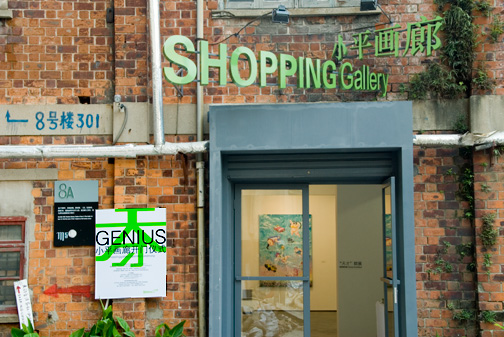
Former industrial spaces have been converted, to greater or lesser degrees, into art display spaces grand and modest, high design or gritty (think P.S. 1). Bookstores and cafes are interspersed. Signs of the two districts’ more modest beginnings as cheap live-work spaces for artists are still visible and, as with many such districts elsewhere, the cloud of potential demolition in the form of urban “renewal” hangs over both.
At the core of the 798 District is a large, museum-like space (again, think P.S. 1, but a bit smaller). Curated shows are featured, both of Chinese and foreign origin. The exhibition while we were there was “Transexperiences,” from the National Museum of Contemporary Art of Athens, which included work by Lucas Samaras, Stephen Antonakos, Chryssa, and Jannis Kounellis.
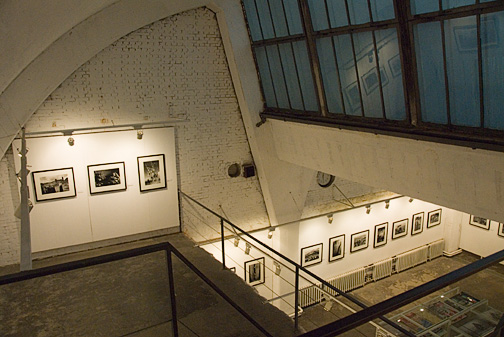
Right next door, the 798 Photo Gallery (a beautiful space preserving its industrial origins but displaying and lighting the work optimally) had a show of powerful documentary photography, “Buddhism in Tibet,” by Yang Yankang.
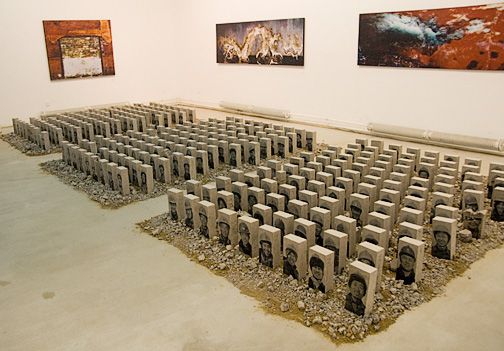
The 798 District is a low-rise industrial park with relatively wide streets and trees, and some of its buildings still house operating factories, so there is a mix of people moving through the area, especially at the evening rush hour. In that sense, it has some of the feel of New York’s SoHo in the 1970s.
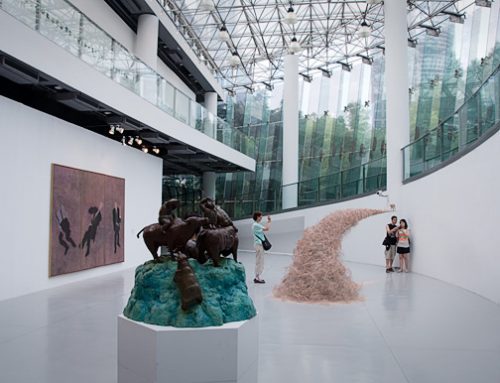
Shanghai’s M50 district does not have a core museum-like institution. That role is played by the Museum of Contemporary Art – a very contemporary structure in Peoples’ Park, downtown.
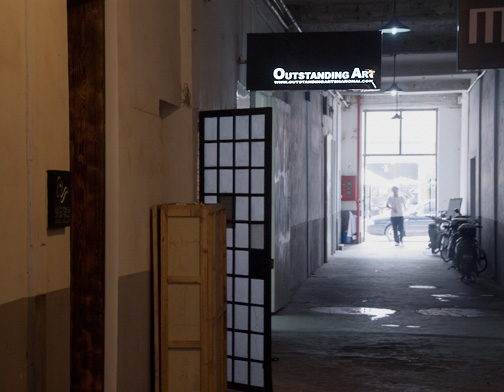
M50 is more of a warren than is 798, with narrow alleys, multi-storey spaces, and catwalks connecting buildings.
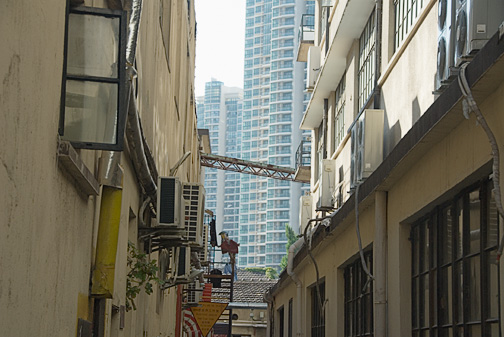
It is denser with galleries and activity and there are more signs of continued live-work use (such as laundry hung out to dry). One of the M50 spaces is maintained by the Shanghai Art School, showing student work and offering hands-on experience to curatorial studies students.
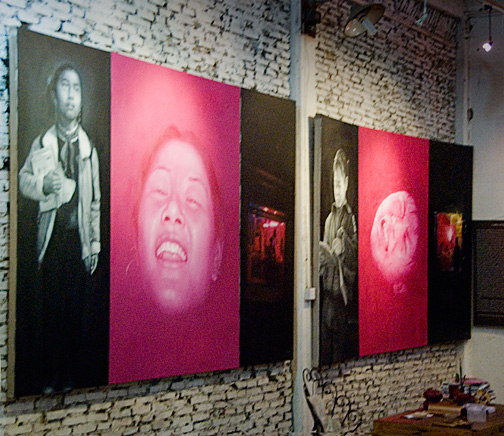
It might also be noted here that artists with significant resources at their disposal (such as Zhang Huan, who recently had a major show at Pace Wildenstein) are taking over former factory spaces, similar to M50 but on the outskirts of Shanghai, to turn them into functioning studio-factories for the production of large-scale or multiple works. (Here’s a link to Andrea’s most recent post on Zhang Huan, who is an artblog favorite).
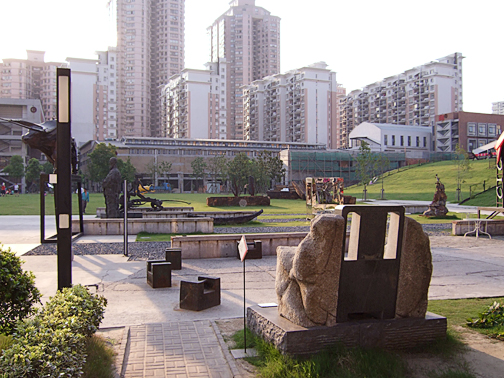
There is a lesser-known contemporary art complex – Shanghai Sculpture Space at Red Town – that is also housed in a converted factory and that has a large outdoor sculpture garden.
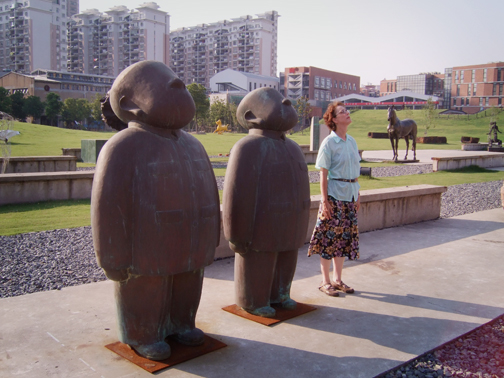
The indoor area is a seamless mix of open display spaces, separate galleries, cafes and bookstores, and artist studios. (Philadelphia’s Crane Building comes to mind, except that there are some soaring four-storey spaces open to skylights.)
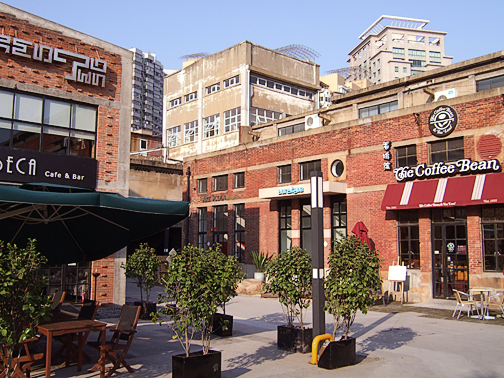
Overall, Red Town has a bit of a different “feel” in that it also incorporates some larger stores, restaurants and even a trendy nightclub. Apparently, in China, it is easier to attract investment money if serious “shopping” (other than just for the art works) is involved.
The art on display in all of these spaces is also almost entirely based on Western models, and it is clear that Chinese art students peruse the same art magazines as their counterparts in the U.S. or Germany. Visiting twenty galleries in Shanghai, you will have an even more mixed experience than you will typically have in visiting twenty galleries in Chelsea. Some galleries do feature highly traditional Chinese art forms (such as ink-wash scrolls or jewelry-like carving). Overall, the work ranges from absolutely top-notch (in both concept and execution) to hopelessly amateurish or kitsch. Clearly, the cream of the crop is being selected for promotion in New York or London.
This is a limited overview. There are many other venues in both Beijing and Shanghai showing contemporary art, including blue-chip downtown spaces and university spaces. And, like the cities themselves, the art “scenes” are expanding rapidly. In general, Beijing has benefitted from greater infusion of government money, but the wilder and more entrepreneurial qualities of Shanghai seem to be propelling it into the forefront.
—Photographer Blaise Tobia and sculptor Virginia Maksymowicz are Philadelphia artists.



